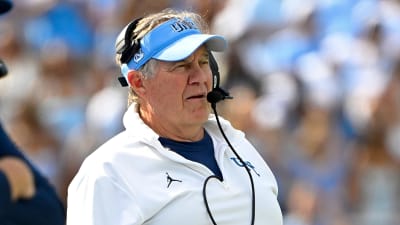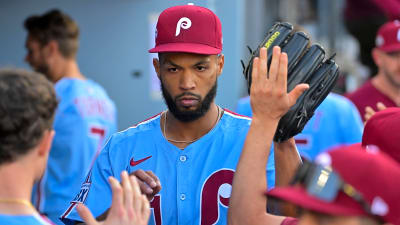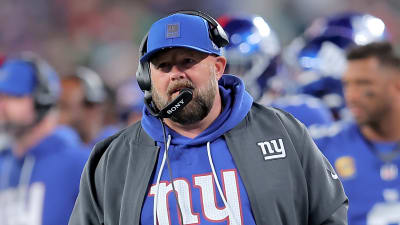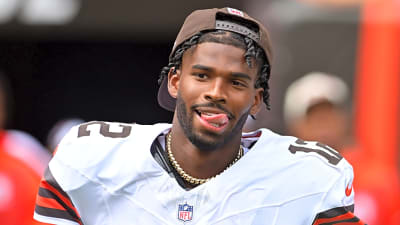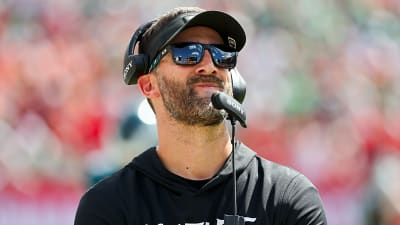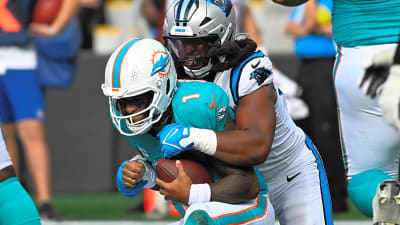
Amar'e Stoudemire's presence (and absence) changed the NBA
Amar’e Stoudemire had soft hands and always expected that he might need them at any given point. He played his best years with a magician — Steve Nash is what they called him — whose most mind-blowing tricks always involved placing an orange sphere in Stoudemire’s hands in the most impossible situations.
During the 2004-05 season, impossible became the norm. The tandem became a lightning rod of excitement, their game play elevated atop every arena, ensuring a bolt of electricity would come down from the hoops heavens multiple times per night.
It was hard to look away, even when the Suns were dismantling your favorite team by pushing the ball off short and long rebounds, made and missed shots, live and dead ball turnovers. Once the possession shifted from Team A to Phoenix, the Suns were looking to get the ball to the rim in the length of a Vine. While the rest of the NBA was still telling stories via YouTube, the Suns were a quick-hitting Snapchat story — and it was Stoudemire who was able to make it all happen. He was as comfortable out-running sluggish bigs on the break as he was slipping his man in those patented double-drag sets Mike D’Antoni made so popular during secondary breaks.
There were few holes in Stoudemire’s game; he was a violent finisher around the rim, could use both hands, had ever-improving footwork and, at only 22 years old, he was becoming more confident with his midrange jumper. On the defensive end, he left a bit to be desired, but he was growing into one of the league’s better help defenders, sending unsuspecting guards’ nonce visions of a pair of points into the expensive seats.
Stoudemire was all but the complete package: young and, well, fun as hell. The Suns’ peak coincided with my best years in college, and I spent many nights packed into small dorm rooms playing Super Smash Bros on Nintendo 64 and discussing Amar’e dunks with John, Joe and Rami. Only later would I read Jack McCallum’s fantastic feature about the time he served as an assistant coach for the Suns for a week.
His time with Phoenix was the training camp leading into the 2005-06 season, and the Stoudemire story that stood out the most was one in which the coaching staff talked about Stoudemire’s best jams like I did with my boys.
When the conversation turns to Stoudemire, whose five-year, $73 million contract extension will be announced on Media Day, the coaches sound more like fans. "Last season he dunked on [the Houston Rockets'] Yao Ming and didn't even look at him," says Weber. "Yao is 7'6". How is that possible?"
"Yao wasn't looking at him, either," says Iavaroni. "He had his eyes closed in fear."
"I'm not sure his best dunk wasn't against Adonal Foyle in the Golden State game," says Gentry.
"The one against [the Minnesota Timberwolves' Michael] Olowokandi was better," counters Weber. "Olowokandi's 7'1" and his wingspan must be 9'6"."
Stoudemire was that kind of player, one whom you could sit around a cheap Dell for 45 minutes and watch grainy clips of his disgusting dunks and absurd half-court alley-oops from Nash. The Suns were the NBA’s preeminent case study for a new kind of playing style. The 2001 Kings and the 2003 Mavericks were early versions of what the Suns would become — and some elements moved through all three teams: great shooting, an up-tempo pace and an emphasis on movement, both with and without the ball. But what the Kings and Mavericks didn’t have was a Stoudemire; Nash made everything work for the Suns, but it was Stoudemire who made everything work for Nash.
The thing with Stoudemire — and it was always the thing with Stoudemire — if he could just stay healthy, his presence could have turned even the biggest of the mid-aughts iconoclasts into true believers of the seven-seconds-or-less Suns. Instead, Stoudemire’s absence during the Suns’ mini-run as the most fun team in basketball became every bit as much a part of his story as those times he was on the floor. Phoenix played well without him as he recovered from microfracture surgery during the ‘05-06 season with Boris Diaw playing a quasi-point forward role that was both confounding and aesthetically wonderful. During the 2006-07 year, it was Stoudemire’s absence in Game 5 of the Western Conference Semis that lived in the headlines.
Those knees didn’t just keep Stoudemire off the court during a stretch of the four most interesting years in the Suns’ franchise history, but his absence prolonged the league’s acceptance of today’s offensive ethos. The Suns weren’t perfect. Despite having a pair of great defenders, they could never quite figure out how to get stops as a team when they needed them most. They were too reliant on Nash, and D’Antoni was a tad bit too stubborn to make the necessary adjustments during the postseason. These flaws existed but were hardly the reason Phoenix never reached the game’s apex. Stoudemire’s health served as a stone cast at the Suns’ glass ceiling, and the whole league watched as it came crumbling down with each missed game.
Stoudemire oozed with athleticism, could jump through every arena and had a pair of the softest hands we’ve seen from a young, gifted power forward. His early years were a look into a positional future that never quite materialized. He was a paradigm-shifting talent born with the wrong pair of knees. His and Nash’s connection on the floor was magical, but watching Stoudemire’s disappearance was a trick we never wanted to see.
In retrospect, it’s amazing that Stoudemire played 14 years in the NBA. What’s even more amazing is that he retired not with the Suns, but with the New York Knicks, the city where none of his legacy exists. In a way, Stoudemire retiring serves as a perfect metaphor for his time in Phoenix: We never stop thinking about the times he wasn’t present; now his absence from the franchise is his last contribution to the NBA.
0/41
7:00
More must-reads:
- Amar'e Stoudemire announces retirement after signing one-day contract with Knicks
- Amar’e Stoudemire wanted to reunite with Suns before retiring with Knicks
- The 'Phoenix Suns first-rounders' quiz
Breaking News
Trending News
Customize Your Newsletter
 +
+
Get the latest news and rumors, customized to your favorite sports and teams. Emailed daily. Always free!

